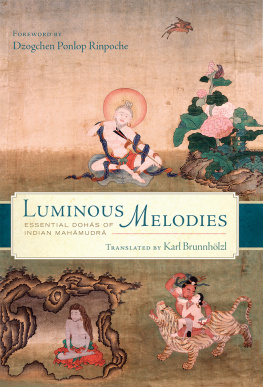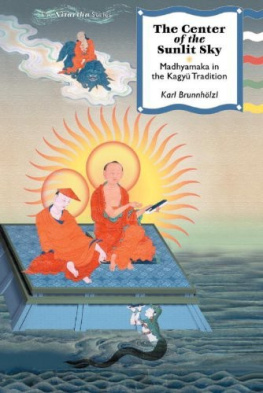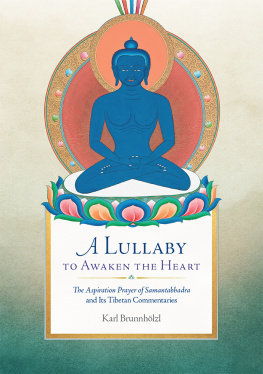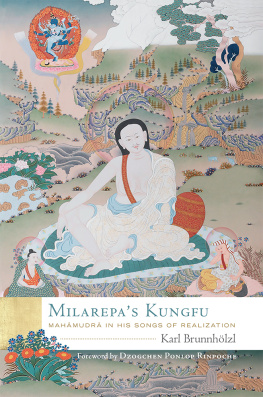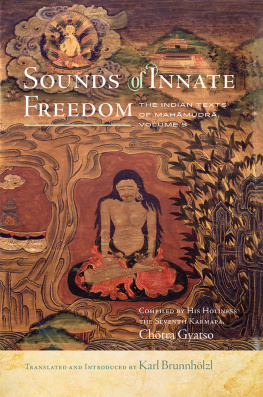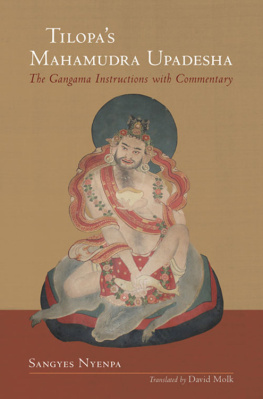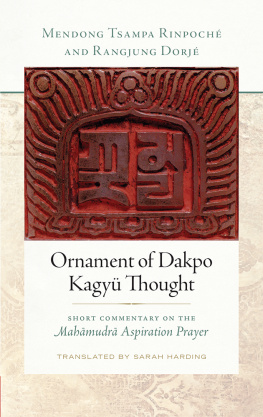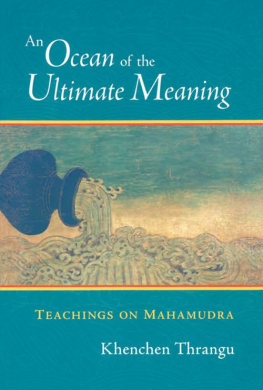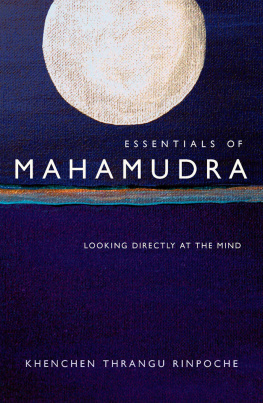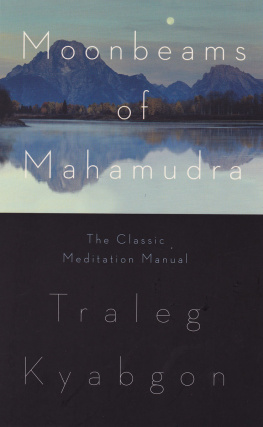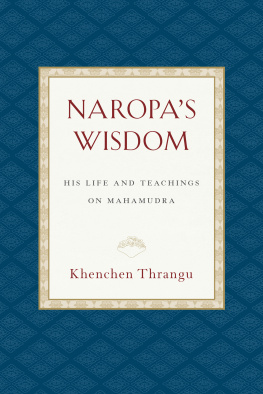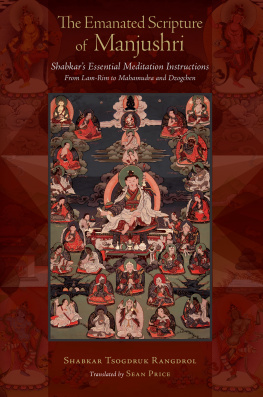The publisher gratefully acknowledges the generous help of the Hershey Family Foundation in sponsoring the production of this book.
Foreword
A GREATLY RENOWNED South Indian Buddhist scholar-monk by the name of Rhulabhadra was once passing through a town. As he maneuvered through the fair, he became mesmerized by a young woman who was straightening a piece of bamboo with three segments. Noticing her exceptional powers of concentration, he asked, Young lady, what are you doing? Are you an arrow maker? Moving in closer, he saw that she had one eye closed and the other looking directly at the piece of bamboo. She was one-pointedly focused on her task, not distracted or disturbed by all the hustle and bustle of the marketplace.
Nevertheless, she answered Rhulabhadra, saying: The intention of the Buddha can only be known through signs and skillful means, not through words and concepts. In that moment, the three-kya nature of buddha-mind became apparent to him through the signs and symbols the young woman, secretly a wisdom kin, had displayed. A classical text relates the insights that arose in his mind:
Her one eye closed and the other open is the symbol of closing the eyes of consciousness and opening the eyes of wisdom; the bamboo is the symbol of the nature of mind; the three segments symbolize the three-kya nature; straightening is the direct path; cutting the bamboo from the root is cutting the root of sasra; cutting the top of the bamboo is cutting ego-clinging; making four slots [for feathers] is the four unborn
Sudden awakening took place in his heart and he fully realized mahmudr. Recognizing that a wisdom kin was in front of him, he proclaimed, You are not an arrow maker but a symbol maker! From that time onward he followed her, abandoning scholarship and adopting the tantric path. He became known as Saraha or Sarahapda, the arrow shooter, referring metaphorically to he who has shot the arrow of nonduality into the heart of duality. Saraha became the foremost mahsiddha of the tantric tradition of Buddhism.
The doh lineage in tantric Buddhism began when Saraha, also known as the Great Brahmin, started singing spontaneous songs of realization to his disciples: the king, the queen, and the people of the kingdom. Since then, the great siddhas of the mahmudr lineage have continued to express their realization and instructions to their disciples in pithy and spontaneous songs known as dohs . The most renowned of these many songs of realization is Milarepas Ocean of Songs , commonly known as the Hundred Thousand Songs . The doh tradition continues today with numerous songs from my own guru, Dechen Rangdrol, a contemporary mahsiddha.
I am genuinely excited to have this opportunity to work with Mitra Karl Brunnhlzl to translate the large compendium of texts called the Indian Texts of the Mahamudra of Definitive Meaning , compiled by the Seventh Karmapa Chtra Gyatso (14561539). Making this classic mahmudr literature available in English for the first time is a historic and noteworthy project.
This initial book, which presents the dohs of the compendium of the Indian Texts of the Mahamudra of Definitive Meaning , is indispensable for understanding the contents and origin of these teachings. In order to become familiar with the mahsiddha tradition, it is a must-have first volume.
As many readers may already be aware, Mitra Karl not only is well versed in the studies of Buddhist philosophy and the Tibetan and Sanskrit languages but also has practiced these teachings for many years under the guidance of my guru, Dechen Rangdrol. Mitra Karl has also been studying with me, and I have full confidence and trust that his translation work here will be true to the original.
I want to thank Wisdom Publications for their openness and support in bringing these treasures of the East to the West.
May this book help all to discover the treasure within our ordinary mind of neurosis.
Dzogchen Ponlop Rinpoche Nalanda West, Seattle, WA
Preface
I WOULD LIKE TO OFFER my heartfelt gratitude and appreciation to Khenchen Tsltrim Gyamtso Rinpoche and Dzogchen Ponlop Rinpoche for having introduced me to the tradition of Indian and Tibetan Buddhist songs of realization. Both of these masters also inspired me as accomplished composers of their own spontaneous poems of insight and realization, in both Tibetan and English. Furthermore, Dzogchen Ponlop Rinpoche is to be thanked for the initial idea of translating the large collection of Indian Mahmudr texts compiled by the Seventh Karmapa, from which the following songs are extracted, as well as for his ongoing support during this project in many ways. Without these two masters of both ancient and contemporary expressions of realization, this volume would never have been possible, and on a personal note, I probably would never have started to enjoy singing Buddhist songs.

